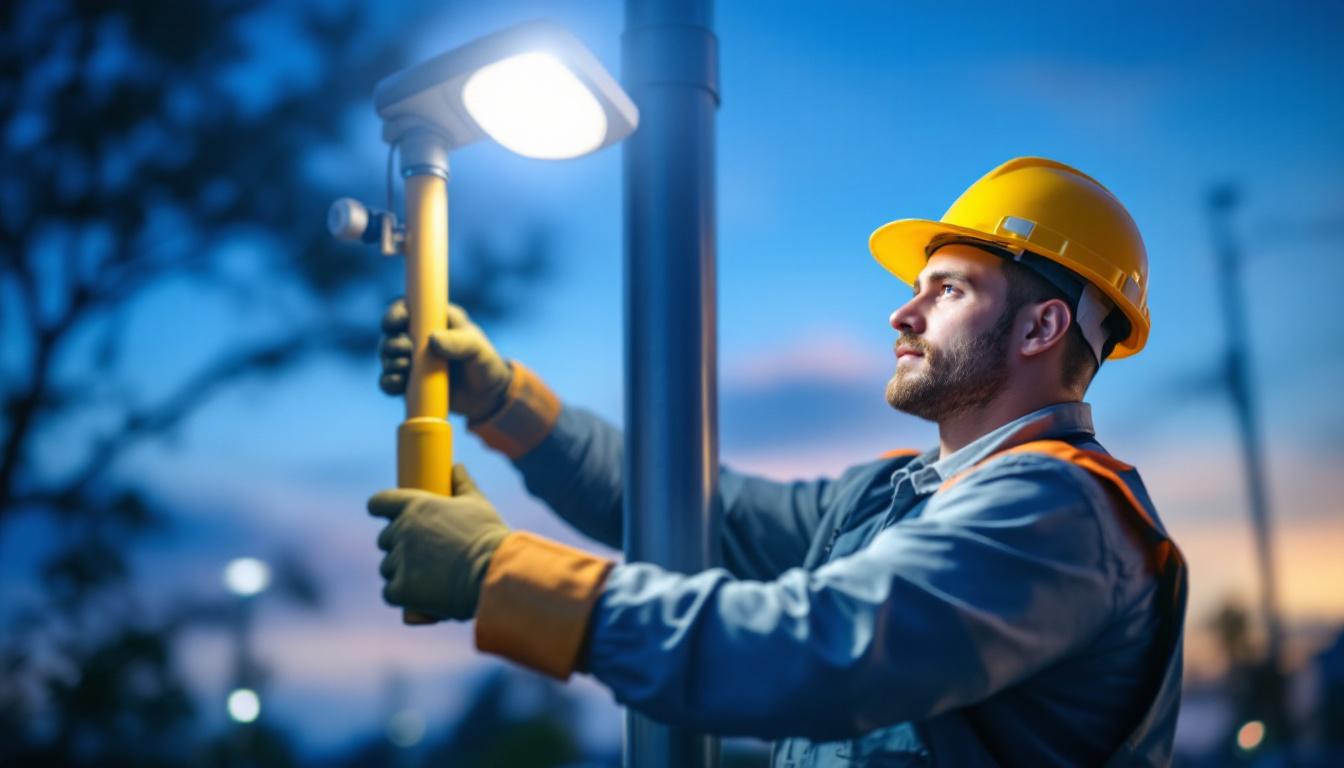
In the world of electrical installations, understanding the various types of electrical cords is crucial for lighting contractors. These cords are not just mere conduits for electricity; they are essential components that ensure safety, efficiency, and functionality in any lighting project. This article delves into the specifics of electrical cords, their types, applications, and best practices for installation, tailored specifically for lighting contractors.
Electrical cords are flexible, insulated cables that transmit electrical power from one point to another. They come in various types, sizes, and configurations, each designed for specific applications. For lighting contractors, knowing the right cord to use in different scenarios can significantly impact the quality and safety of the installation. Selecting the appropriate cord not only ensures compliance with safety standards but also enhances the longevity and performance of the electrical system. Understanding the specifications and limitations of each type of cord is crucial for effective project planning and execution.
At their core, electrical cords consist of conductors, insulation, and protective sheathing. The conductors, typically made of copper or aluminum, carry the electrical current. Insulation materials, such as PVC or rubber, protect the conductors from environmental factors and prevent electrical shock. The outer sheathing provides additional protection against physical damage and environmental exposure. Furthermore, the quality of these components can vary significantly, affecting not only the performance of the cord but also its safety. For instance, cords with higher gauge numbers generally have thinner conductors, which may not be suitable for high-power applications. Understanding these nuances can help contractors make informed decisions when selecting cords for specific tasks.
There are several types of electrical cords, each suited for different applications. The most common types include:
In addition to these common types, there are specialized cords designed for unique environments and applications. For instance, Type SJOOW cords are often used in industrial settings due to their oil, water, and abrasion resistance, making them ideal for machinery and tools in factories. Similarly, Type W cords are utilized in construction sites where heavy-duty power is required, as they can withstand harsh conditions and heavy loads. Understanding the specific requirements of each project can help contractors choose the most appropriate cord type, ensuring both safety and efficiency in their electrical installations.
Selecting the appropriate electrical cord is critical for ensuring safety and efficiency in lighting projects. Factors to consider include the cord’s ampacity, voltage rating, and environmental conditions.
Ampacity refers to the maximum amount of electrical current a cord can safely carry. Lighting contractors must ensure that the selected cord can handle the load of the lighting fixtures being installed. Overloading a cord can lead to overheating, which poses a significant fire hazard. It is advisable to consult the National Electrical Code (NEC) guidelines, which provide detailed tables and recommendations for ampacity based on wire gauge and insulation type. Furthermore, it’s wise to incorporate a safety margin by selecting a cord with a higher ampacity than the calculated load, especially in projects where future expansions or additional fixtures may be added.
Each electrical cord is rated for a specific voltage. It is essential to match the cord’s voltage rating with the lighting system’s requirements. Using a cord with a lower voltage rating than required can result in insulation breakdown and potential electrical failures. Additionally, contractors should be aware of the implications of using cords rated for direct current (DC) versus alternating current (AC), as this can affect performance and compatibility with various lighting technologies, such as LED or fluorescent systems. Ensuring that the voltage rating aligns with the system not only enhances safety but also optimizes the efficiency of the lighting setup.
Consider the installation environment when selecting electrical cords. For outdoor installations, cords should be rated for wet or damp locations. Additionally, exposure to chemicals, UV light, or extreme temperatures may necessitate the use of specialized cords designed to withstand these conditions. For instance, cords used in industrial settings may require extra protection against abrasion and impact, while those in residential areas might need to be more flexible for easier handling and installation. Moreover, understanding the local climate can guide the selection process; in regions with high humidity or frequent temperature fluctuations, selecting cords with enhanced moisture and temperature resistance can prolong the lifespan of the installation and reduce maintenance costs.
Proper installation of electrical cords is paramount for ensuring safety and functionality. Following best practices can help prevent common issues and enhance the longevity of the lighting system.
When installing electrical cords, it is essential to route them properly to avoid physical damage. Cords should be secured and supported to prevent strain on connections and reduce the risk of wear and tear. Use cable ties or clamps to secure cords along walls, ceilings, or other structures. Additionally, consider the environment in which the cords are installed; for instance, in areas with high foot traffic, it may be beneficial to use cord covers to protect them from being stepped on or snagged.
Overheating is a common issue that can arise from improper installation. Ensure that cords are not bundled tightly together, as this can trap heat and lead to insulation failure. Additionally, avoid running cords through areas where they may be exposed to excessive heat sources. It’s also advisable to choose cords with appropriate ratings for the intended use; for example, using cords designed for outdoor use in high-temperature environments can significantly reduce the risk of overheating and enhance safety.
Regular inspections of installed electrical cords are vital for maintaining safety and performance. Look for signs of wear, such as frayed insulation or exposed conductors. Any damaged cords should be replaced immediately to prevent electrical hazards. Furthermore, it is wise to establish a routine inspection schedule, especially in settings where cords are frequently moved or adjusted. Keeping a log of inspections can help identify patterns of wear and inform future installation practices, ensuring that safety remains a top priority.
In addition to installation techniques, selecting the appropriate materials is crucial for optimal performance. High-quality cords with durable insulation can withstand environmental factors better than cheaper alternatives. Consider the specific requirements of your installation, such as voltage ratings and environmental conditions, to choose cords that will last longer and perform reliably. Furthermore, using connectors and plugs that are compatible with the cords can prevent connection issues and enhance overall system integrity.
Familiarity with local electrical codes and regulations is essential for any installation project. These codes are designed to ensure safety and compliance with national standards. Before beginning an installation, it is advisable to consult local guidelines to ensure that all materials and methods meet the required specifications. This not only helps in avoiding potential fines but also ensures that the installation is safe and effective, providing peace of mind for both the installer and the end-user.
Electrical cords serve a variety of purposes in lighting installations, from powering fixtures to connecting control systems. Understanding these applications can help lighting contractors make informed decisions about cord selection and usage.
In permanent lighting installations, such as residential or commercial fixtures, it is essential to use cords rated for the specific application. These cords are typically hardwired into the electrical system, ensuring a reliable and safe connection.
For events or construction sites, temporary lighting solutions often rely on flexible electrical cords. These cords must be durable and easy to deploy, allowing for quick setup and takedown. Lighting contractors should choose cords that are rated for outdoor use and can withstand the rigors of temporary installations.
As smart lighting systems become more prevalent, the need for specialized electrical cords has increased. These systems often require low-voltage cords for data transmission alongside power delivery. Understanding the requirements of smart systems is essential for ensuring compatibility and functionality.
Safety is a paramount concern for lighting contractors when working with electrical cords. Adhering to safety guidelines can help prevent accidents and ensure compliance with regulations.
Electrical codes dictate the standards for electrical installations, including the use of cords. Lighting contractors must familiarize themselves with local codes and regulations to ensure compliance. This includes understanding the requirements for cord types, installation methods, and safety measures.
Ground Fault Circuit Interrupters (GFCIs) are essential for protecting against electrical shock in wet or damp locations. When using electrical cords in such environments, it is crucial to incorporate GFCI protection to enhance safety. This is particularly important for outdoor lighting installations.
Lighting contractors should educate clients about the importance of proper cord usage and maintenance. Providing guidance on how to care for electrical cords and recognizing signs of wear can empower clients to take proactive measures in ensuring safety.
The electrical cord industry is evolving, with advancements in technology leading to the development of new cord types and materials. Staying informed about these trends can give lighting contractors a competitive edge.
Smart cords equipped with sensors and connectivity features are emerging in the market. These cords can monitor energy usage, detect faults, and provide real-time data to users. Incorporating smart cords into lighting installations can enhance efficiency and provide valuable insights.
As sustainability becomes a priority, manufacturers are exploring eco-friendly materials for electrical cords. This includes biodegradable insulation and recyclable components. Lighting contractors should consider these options to align with environmentally conscious practices.
Advancements in materials science are leading to the development of more durable electrical cords. These cords are designed to withstand extreme conditions, making them suitable for a wider range of applications. Investing in high-quality, durable cords can reduce long-term costs associated with replacements and repairs.
Understanding electrical cords is essential for lighting contractors looking to deliver safe, efficient, and high-quality installations. By selecting the right cords, adhering to best practices, and staying informed about industry trends, contractors can enhance their services and ensure client satisfaction. As technology continues to evolve, embracing new materials and innovations will be key to staying competitive in the ever-changing landscape of the lighting industry.
Ready to elevate your lighting installations with the highest quality electrical cords and lighting products? Look no further than LumenWholesale for all your contractor needs. Our spec-grade selection is designed to meet the most rigorous industry standards, ensuring you deliver safe, efficient, and exceptional lighting solutions every time. With unbeatable wholesale prices and the convenience of free shipping on bulk orders, you can trust LumenWholesale to provide the best value without any hidden fees. Wholesale Lighting at the Best Value is just a click away. Experience the difference with LumenWholesale today.

Discover essential tips and expert advice for lighting contractors on selecting and installing bronze weatherproof boxes.

Discover how the latest advancements in outdoor security lighting are revolutionizing the work of lighting contractors.

Illuminate your projects with confidence! Discover essential insights on poles for outdoor lights, tailored for lighting contractors.

Discover the essential best practices for lighting contractors when installing light post sensors.